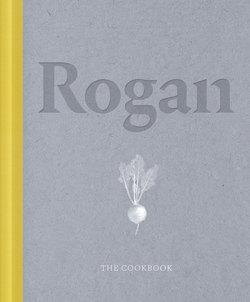Читать книгу Rogan - Simon Rogan - Страница 18
ОглавлениеSweet Cicely
(Myrrhis odorata)
From April right until October, the roadsides and fields around Cartmel are abundant with mounds of sweet cicely’s fern-like leaves and tiny white flowers (much beloved of bees, and so important, as they are the first nectar plants in spring), growing in any bare patch of soil they can find. It’s a prolific herb in Cumbria, where it is known as sweet brackens, which is how it appears on our menu. It has an incredibly long season, which is great for us as it has multiple uses in the kitchen, and this versatility is why this herb features so frequently in many of our dishes and why I also make sure that we preserve as much of it as we can for our larder. I’m a huge fan of the anise flavour, and this herb has it in spades – you can often smell a clump of sweet cicely before you see it.
Although sweet cicely grows on the roadside near the restaurant, I prefer to get a dawn start and forage for it on Bigland Hill, about 20 minutes away from Cartmel. I love going here before I start work; it is a high point in the landscape and on a clear summer morning the views are spectacular – and as an added bonus there’s no phone signal, so I can pick in peace!
We use every part of the plant: the light-green lacy leaves, the delicate white flowers, the long, pointed seeds, and even the roots ¬ which make a great wine. Every bit is infused with the aroma of sweet aniseed when crushed. The leaves have more flavour when young and before the plant puts its energies into its flowers, or you can wait for the seed pods in late summer, which have a sweet flavour and nutty texture. Once picked, the scent and flavours fade quickly, so they need to be used fresh, or if they are being preserved for another day, do it immediately. Be careful when picking this herb in the wild, though, as it looks similar to poison hemlock.
Sweet cicely complements a real array of ingredients. It is a natural sweetener, so the leaves and green seeds will reduce the tartness of rhubarb and gooseberries and add an anise note when used raw in fruit salads (it is especially good with peaches, apricots and strawberries), it also lends a spicy tang to cakes and makes beautiful ice cream. In savoury dishes it marries particularly well with fish and seafood, chicken and root vegetables, and it really lifts a green or cucumber salad. I like to use the fresh, barely opened flowers scattered over salads or as a garnish. Although sweet cicely already has a really long season, we like to extend it further by pickling the buds, using the leaves to make oils, salts and sugars, and dry the leaves for use over the winter. Its flavour does dissipate on cooking, though, so you need to add it to a hot dish at the end to get the best from it – it’s fantastic in soups, stews and sauces.
Sweet cicely is a real gift from nature; there is no end to the uses for this beautiful, hard-working herb, so do keep an eye out for it, or grow a clump yourself.
